The Democratic Republic of the Congo (DRC) is home to an incredibly diverse range of bird species. From the majestic African fish eagle to the vibrant blue-headed bee-eater, the DRC is a haven for ornithologists and bird-watchers alike.
With over 1,200 species of birds, the DRC is an avian paradise and a true bird-watcher’s paradise. This article will explore the many unique and beautiful birds that can be found in the DRC.
1. Turaco
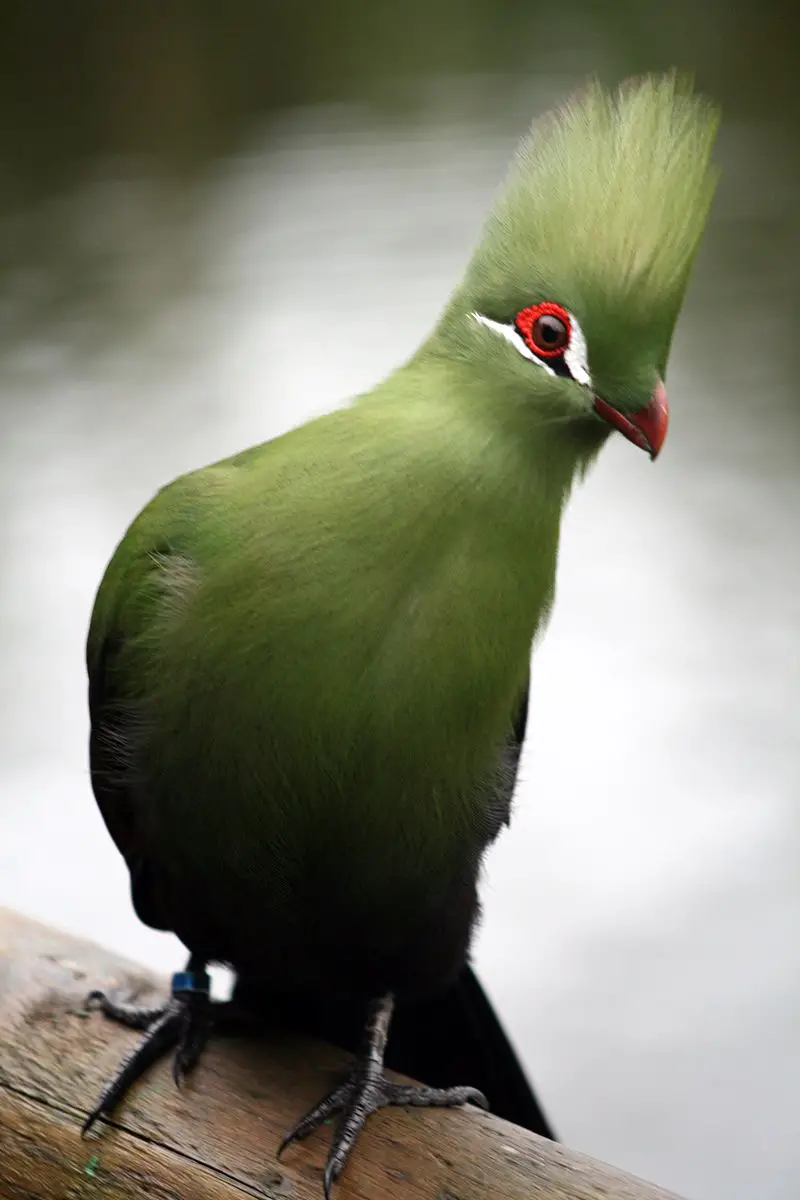
Turacos are a unique bird family that inhabit tropical and subtropical regions of Africa. They are also known as “banana-eaters” or “loeries” in southern Africa, due to their diet which consists mostly of fruit such as plantains.
These birds have an interesting semi-zygodactylous foot structure – the fourth toe can be switched back and forth while the second and third toes remain conjoined.
Turacos come in different sizes depending on species but they all generally boast bright colors like green, blue, purple or red feathers with vibrant yellow eyes.
In addition to being beautiful creatures, these birds make loud calls during mating season which makes them even more special.Scientific classification:
| Kingdom | Animalia |
| Phylum | Chordata |
| Class | Aves |
| Clade | Otidimorphae |
| Order | Musophagiformes Seebohm, 1890 |
| Family | Musophagidae Lesson, 1828 |
2. Congo Peafowl
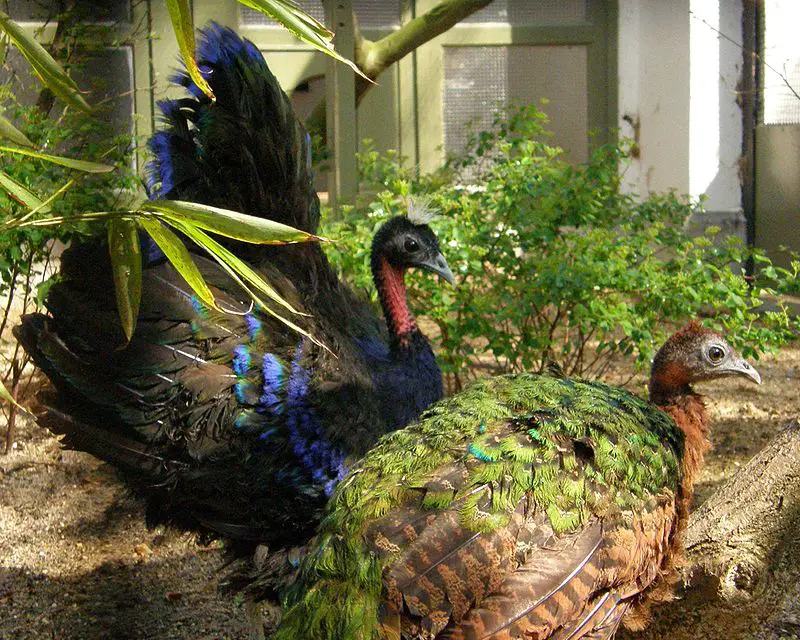
The Congo Peafowl is a species of peafowl native to the Congo Basin in Africa. It has an impressive, long reddish-brown feather that can be found on Congolese headdresses.
The bird itself is listed as Vulnerable on IUCN Red List due to habitat loss and hunting for its feathers, which are used for decoration or religious ceremonies.
To protect this beautiful animal from extinction conservation efforts such as education about their importance must be done.
In addition, legal protection should also be implemented so that these birds will not face any more persecution and danger of being wiped out from our planet forever.Scientific classification:
| Kingdom | Animalia |
| Phylum | Chordata |
| Class | Aves |
| Order | Galliformes |
| Family | Phasianidae |
| Tribe | Pavonini |
| Genus | Afropavo Chapin, 1936 |
| Species | A. congensis |
3. Bedford’s Paradise Flycatcher
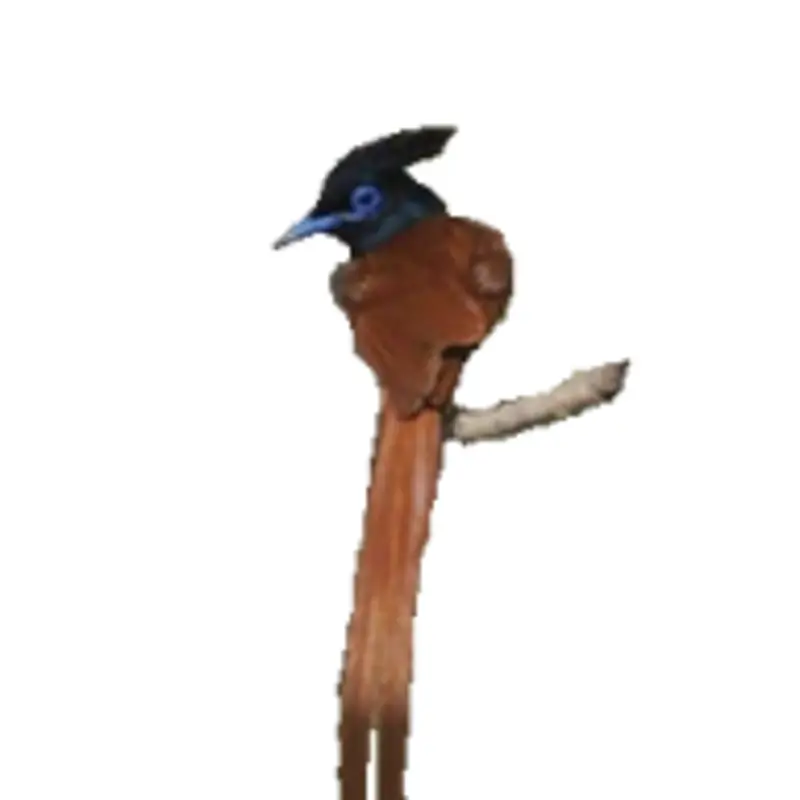
Bedford’s paradise flycatcher is a species of bird found exclusively in the Democratic Republic of the Congo. It inhabits subtropical and tropical dry, moist lowland, and montane forests.
However, its numbers are declining due to habitat loss caused by human activity including deforestation for firewood, agricultural expansion, and mining operations. This medium-sized passerine has distinctive white underparts with black streaks on its chest region as well as dark wings tipped with white feathers.
The males have long tail streamers that can be up to twice their body length while females lack these ornamental plumes but still possess characteristic wing bars which makes them easy to identify in flight or perched atop branches and other vegetation.
Bedford’s paradise flycatcher is listed as Vulnerable by IUCN Red List due to threats posed through degradation of natural habitats where they reside making conservation efforts increasingly important if we want this species survive into future generationsScientific classification:
| Kingdom | Animalia |
| Phylum | Chordata |
| Class | Aves |
| Order | Passeriformes |
| Family | Monarchidae |
| Genus | Terpsiphone |
| Species | T. bedfordi |
4. Yellow-Crested Helmetshrike
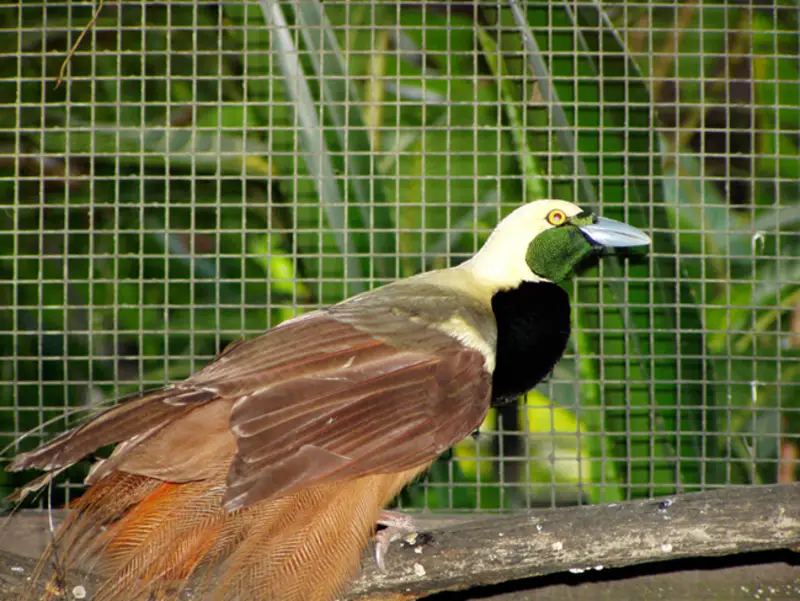
The Yellow-crested helmetshrike is a striking bird found across the mountains of eastern Democratic Republic of Congo. It is unique for its black plumage and bright yellow crest, making it stand out from other birds in the Vanga family Vangidae.
These large birds are still relatively unstudied, leaving much to be learned about them including their behavior, ecology and population size.
Their diet consists mostly of insects as well as some fruits that they feed on while perched high up on trees or rocks near water sources like rivers or streams.
Unfortunately due to habitat destruction these majestic creatures may face an uncertain future if not protected soon by conservation efforts.Scientific classification:
| Kingdom | Animalia |
| Phylum | Chordata |
| Class | Aves |
| Order | Passeriformes |
| Family | Vangidae |
| Genus | Prionops |
| Species | P. alberti |
5. Congo Bay Owl
The Congo bay owl is a species of barn owls, belonging to the Tytonidae family and found in the Albertine Rift montane forests.
It was first described by Belgian naturalist Henri Schouteden in 1952, naming it Phodilus prigoginei as an honour for Russian mineralogist and ornithologist A. Prigogine.
These birds are medium-sized with reddish brown colouration on their upperparts and buff colouring on the underparts.
They have yellow eyes with white eyebrows, along with black speckles across their wings which serve as camouflage from predators.
The diet of these owls consists mainly of small rodents such as mice or rats but may also include other vertebrates like lizards or snakes if available locally.
They usually hunt at night due to its nocturnal nature while roosting during daytime atop trees near riversides or dense woods where food sources can be easily accessed.Scientific classification:
| Kingdom | Animalia |
| Phylum | Chordata |
| Class | Aves |
| Order | Strigiformes |
| Family | Tytonidae |
| Genus | Phodilus |
| Species | P. prigoginei |
6. Grauer’s Cuckooshrike
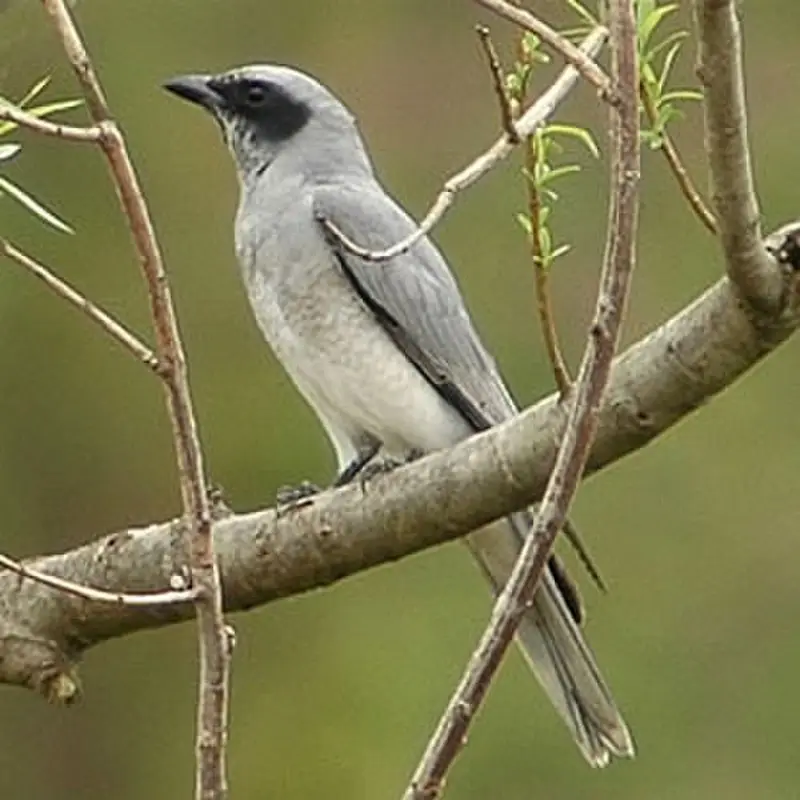
Grauer’s cuckooshrike is a species of bird belonging to the family Campephagidae. It can be found in Democratic Republic of Congo and Uganda, where it inhabits subtropical or tropical moist montane forests.
Unfortunately, this beautiful species’ habitat has been facing destruction due to human activities resulting in its population decline.
The name Grauer’s cuckooshrike commemorates the German zoologist Rudolf Grauer who collected natural history specimens from Belgian Congo during his expedition there.
This medium-sized passerine bird has a black head and grey body with white bars on its wings making it easily recognizable among other birds of same kind in its range area.
Although conservation efforts are at play for this endangered species, more attention needs to be given towards protecting their habitats if we wish them not go extinct soon enough.Scientific classification:
| Kingdom | Animalia |
| Phylum | Chordata |
| Class | Aves |
| Order | Passeriformes |
| Family | Campephagidae |
| Genus | Ceblepyris |
| Species | C. graueri |
Also Featured In: Endemic Birds of Uganda that You Need to Know,
7. Blue-Breasted Bee-Eater
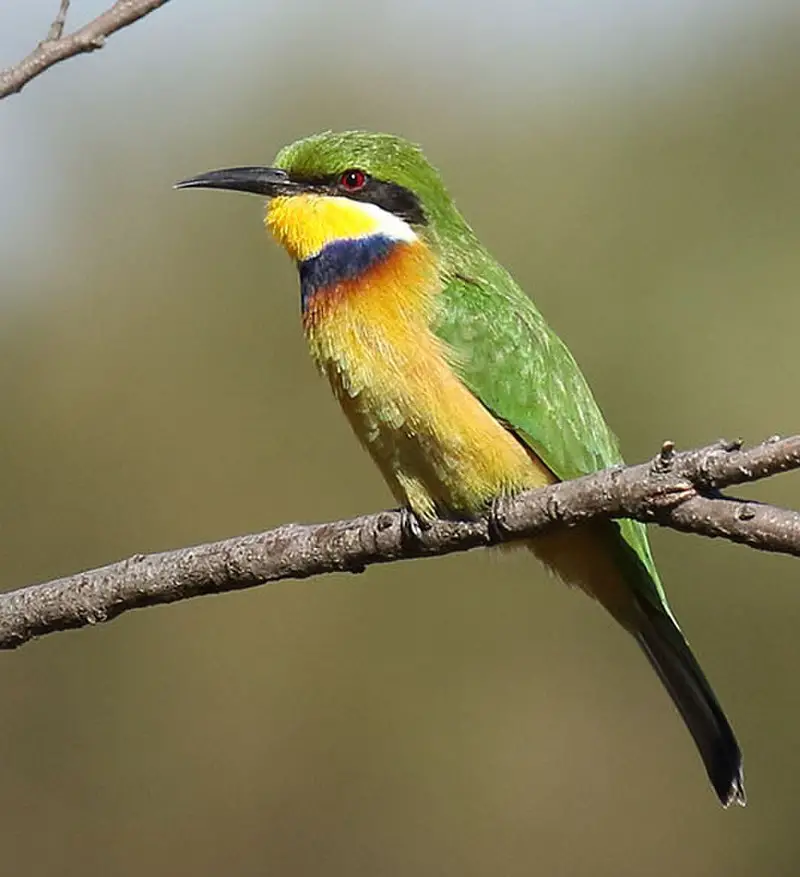
The Blue-breasted Bee-eater (Merops variegatus) is a truly magnificent species of bird found in Central Africa. It belongs to the family Meropidae, which also includes other visually similar birds with specialized diets consisting mainly of Hymenopterans.
This fascinating bird has bright plumage and stands out among its peers due to its large head, short neck and long curved slender beak that allow it to feed on bees and other insects.
Its wings are well developed for strong flight capabilities while its tail helps maintain balance during high speed chases after prey.
The blue-breasted bee-eater is an incredibly beautiful species worth protecting as they play an important role in their natural environment by controlling insect populations.Scientific classification:
| Kingdom | Animalia |
| Phylum | Chordata |
| Class | Aves |
| Order | Coraciiformes |
| Family | Meropidae |
| Genus | Merops |
| Species | M. variegatus |
8. Chestnut Wattle-Eye
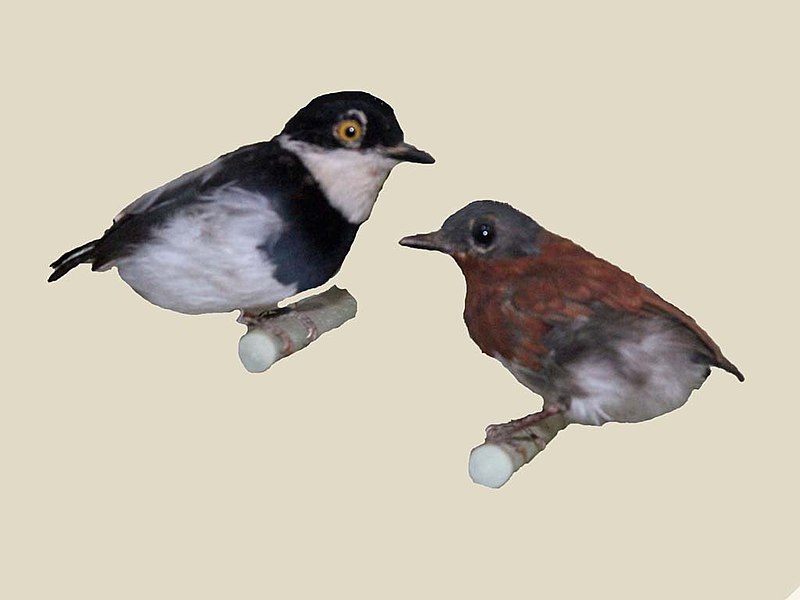
The Chestnut Wattle-eye is a species of bird found in Central and West Africa, from Angola to Zambia. It inhabits moist lowland forests as well as subtropical swamps and woodlands.
This small passerine has distinctive black eyes bordered by white, an olive green back with yellow edging on the wings, chestnut underparts and a bright red head patch.
Its diet consists mostly of insects like flies, moths and beetles which it catches in flight or gleans from foliage.
The Chestnut Wattle-eye also sometimes feeds on fruit while perched high up in trees – often seen alone but occasionally forming mixed flocks with other birds such as sunbirds or weavers.
With its vivid colours this unique little bird brings vibrancy to the African forest canopy.Scientific classification:
| Kingdom | Animalia |
| Phylum | Chordata |
| Class | Aves |
| Order | Passeriformes |
| Family | Platysteiridae |
| Genus | Platysteira |
| Species | P. castanea |
Also Featured In: African Rainforest Birds,
9. Brown-Throated Wattle-Eye
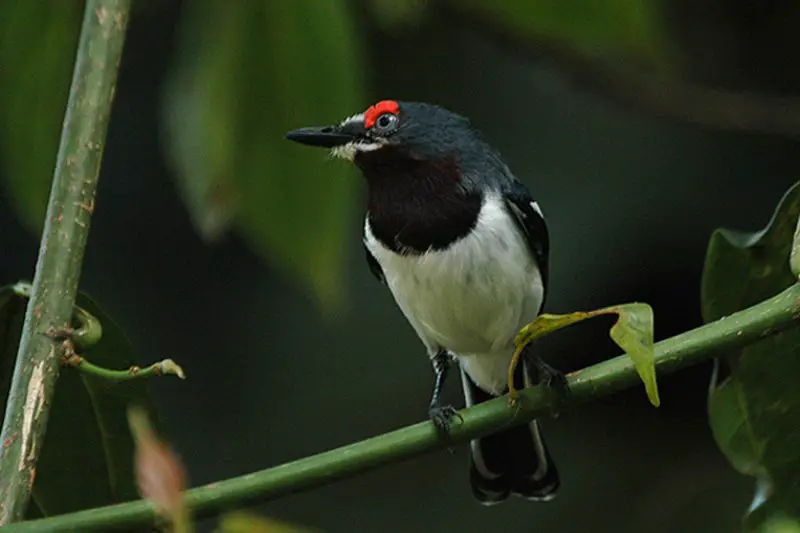
The Brown-throated Wattle-eye is a small and insectivorous passerine bird belonging to the family of Muscicapidae. It usually lives in tropical Africa, being found mainly in western, central and northeast regions.
As it has an eye-catching scarlet spectacled face, this species can be easily spotted due its bright colours. Its diet consists mostly on insects but also eat some fruits or even nectar from flowers when available.
This specie is known for its fast movements as they are good fliers that quickly switch between trees branches looking for food or shelter during rainy days.
They build their nests close to each other providing them with safety against predators thanks to their flock behavior which makes of them one beautiful sight to observe.Scientific classification:
| Kingdom | Animalia |
| Phylum | Chordata |
| Class | Aves |
| Order | Passeriformes |
| Family | Platysteiridae |
| Genus | Platysteira |
| Species | P. cyanea |
Also Featured In: Birds that Live in Benin,
10. African Openbill
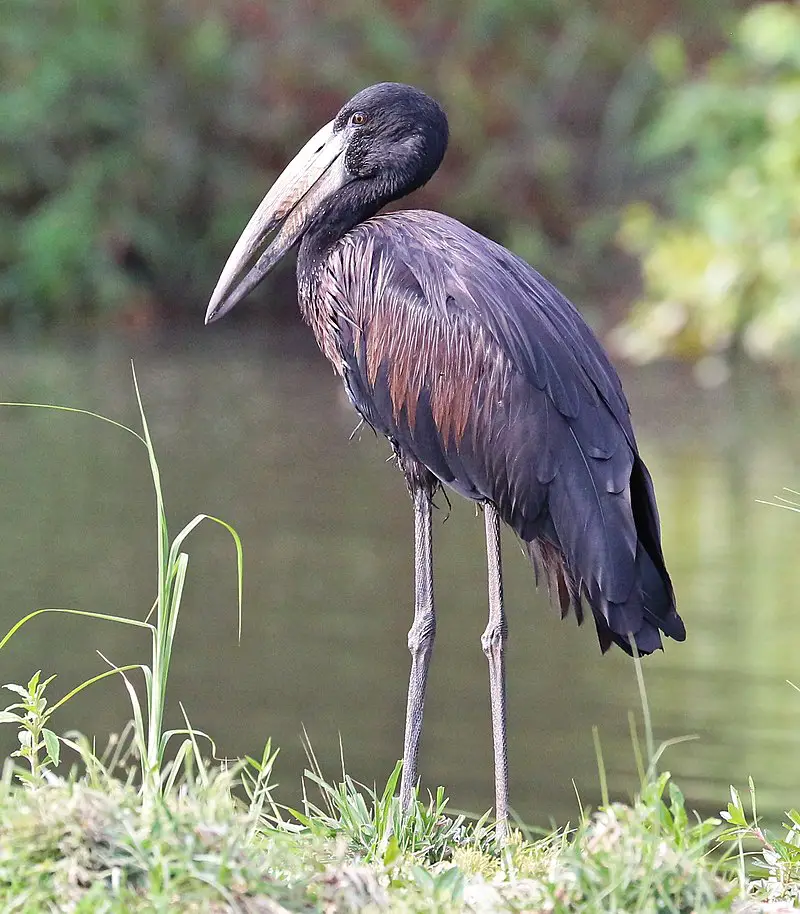
The African openbill is a species of stork found in Sub-Saharan Africa and western Madagascar.
It has a patchy distribution but is generally considered to be common or locally abundant, with two subspecies – A. l. lamelligerus on the continent and A. l. batesi in some parts of Madagascar’s west coast region.
This bird stands up to 75 cm tall and has an impressive bill that looks like it’s been cut down the middle when opened wide.
Its black feathers are contrasted by bright yellow legs, pinkish red eyes, and white wing tips which make it easily recognizable from other species of birds.
It feeds mainly on snails found amongst aquatic vegetation so can often be seen wading through shallow waters looking for food as well as perched atop trees scanning its surroundings for prey items.Scientific classification:
| Kingdom | Animalia |
| Phylum | Chordata |
| Class | Aves |
| Order | Ciconiiformes |
| Family | Ciconiidae |
| Genus | Anastomus |
| Species | A. lamelligerus |
11. Doherty’s Bushshrike
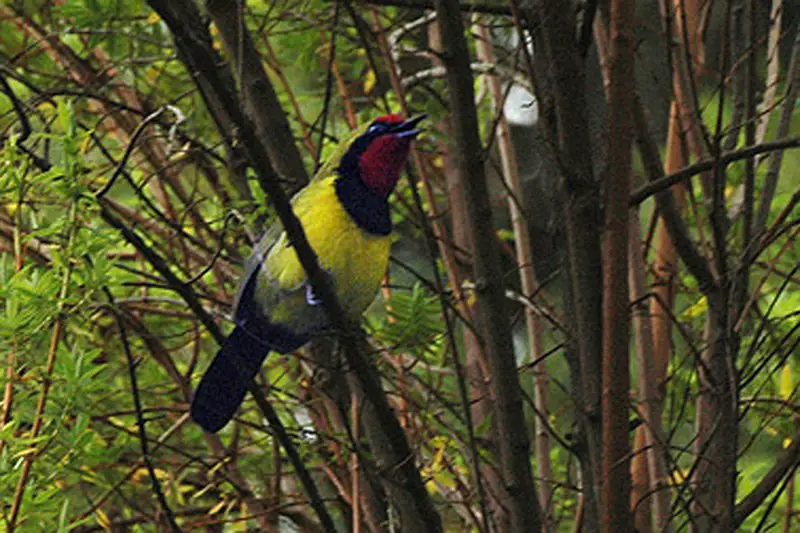
Doherty’s bushshrike is a beautiful bird found in north-central Africa. It has an unmistakable appearance due to its bright green body and vivid red forehead, throat and breast.
The species was named after American collector William Doherty who first discovered it in the late 19th century. Its skulking behavior makes this bird tricky to spot but when you do catch sight of one, its beauty will make it hard to forget.
This medium sized bush shrike prefers forests as their habitats and enjoys foraging for insects on tree trunks or branches. While not commonly seen, those lucky enough can enjoy watching these majestic creatures flitting through African woodlands.Scientific classification:
| Kingdom | Animalia |
| Phylum | Chordata |
| Class | Aves |
| Order | Passeriformes |
| Family | Malaconotidae |
| Genus | Telophorus |
| Species | T. dohertyi |
12. Common Square-Tailed Drongo
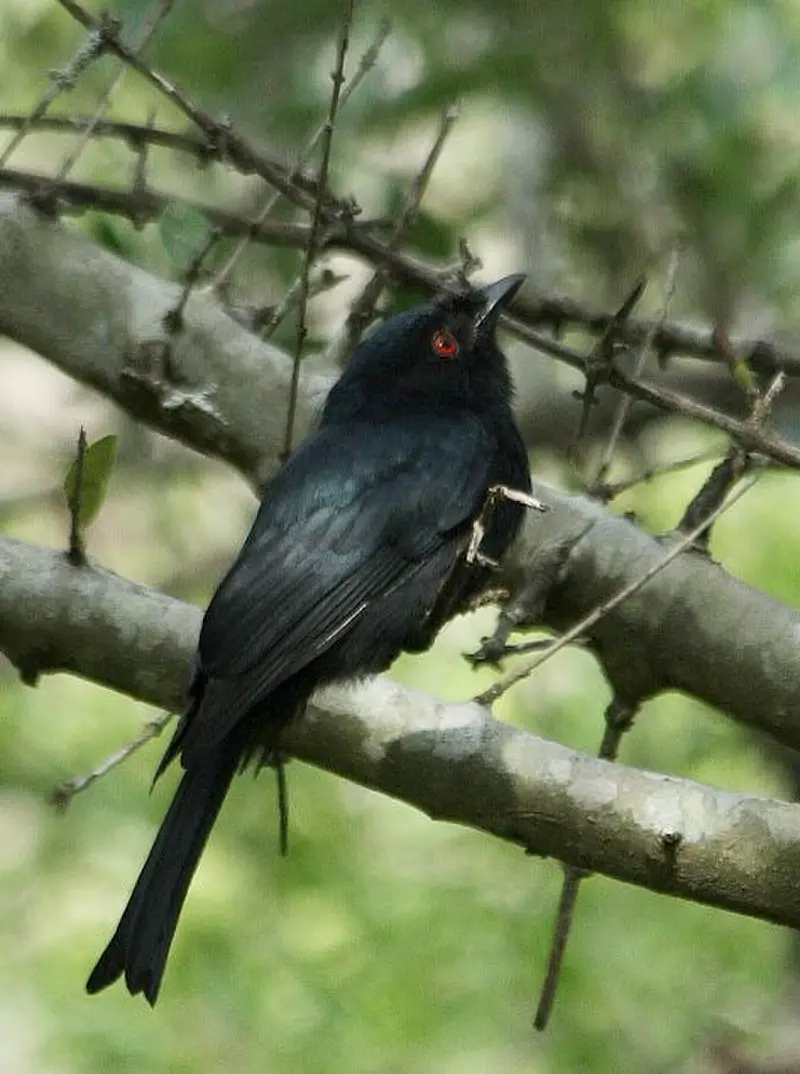
The Common square-tailed drongo is a small passerine bird in the Dicruridae family, measuring 19 cm long. It is found mainly in forests and dense bushes of southern Africa where it breeds as a resident.
Despite its size, this insectivorous species shows aggressive behavior when defending its nest or territory from larger birds. The feathers are typically black with some white spots on the underside and wings that form an obvious pattern when open during flight.
During breeding season males may develop iridescent blue coloration around their throats which they use to attract mates by singing complex songs composed of whistles, chirps and rattles at dawn or dusk.Scientific classification:
| Kingdom | Animalia |
| Phylum | Chordata |
| Class | Aves |
| Order | Passeriformes |
| Family | Dicruridae |
| Genus | Dicrurus |
| Species | D. ludwigii |
13. Abyssinian Roller
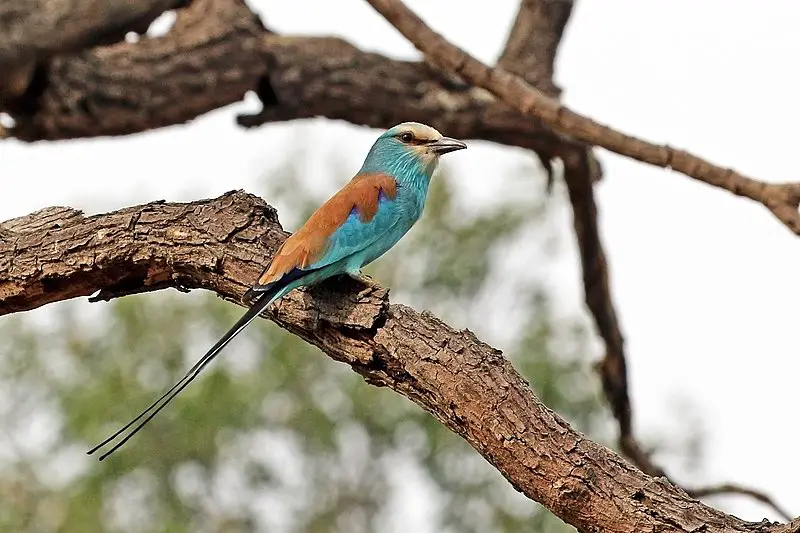
The Abyssinian roller is a large bird, nearly 28 cm in length. It has an unmistakable plumage of bright blue upperparts with chestnut underparts and wings.
Its head is blackish-blue and its tail feathers are white tipped giving it a striking appearance when seen in flight.
This species breeds across tropical Africa from the Sahel belt south of the Sahara desert to East Africa.
Northern populations tend to migrate short distances after wet season while southern ones stay resident throughout year.
They feed mainly on insects which they catch by hovering over fields or open woodland before diving down onto their prey below them.
In addition, they also eat small reptiles, amphibians and rodents along with fruits such as figs occasionally too.Scientific classification:
| Kingdom | Animalia |
| Phylum | Chordata |
| Class | Aves |
| Order | Coraciiformes |
| Family | Coraciidae |
| Genus | Coracias |
| Species | C. abyssinicus |
14. African Wood Owl
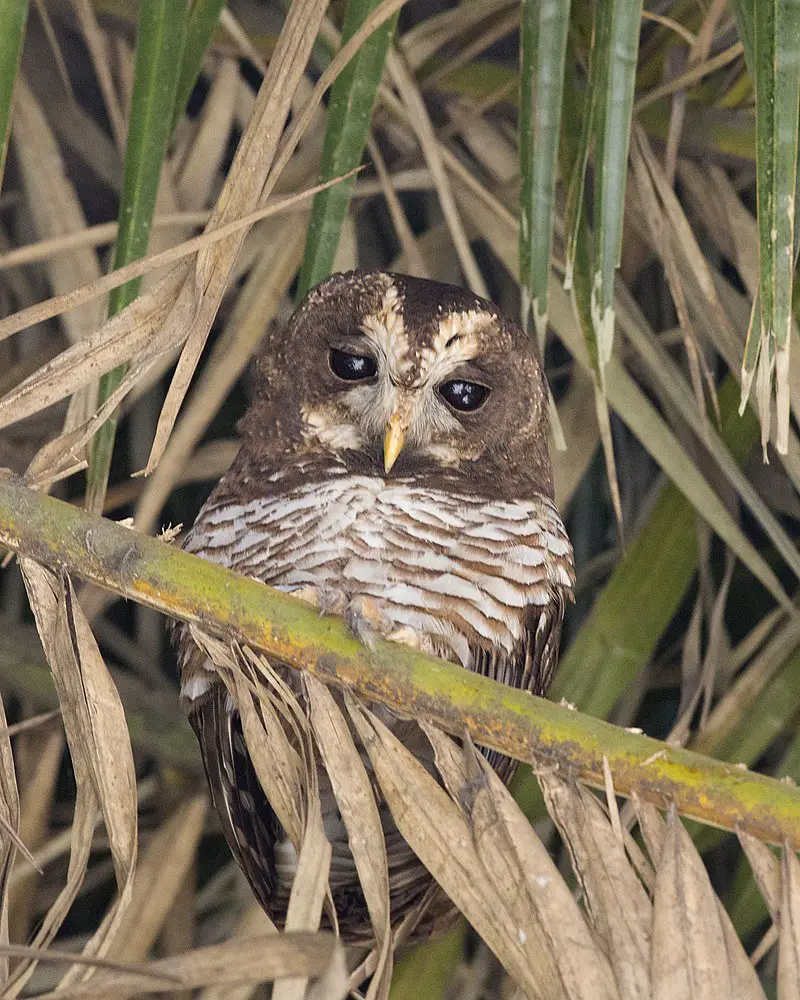
The African wood owl is a medium-sized bird of the genus Strix in the family Strigidae, native to sub-Saharan Africa. It has a typical rounded head with large dark eyes accented by white eyebrows and a white belly barred with brown stripes.
The wings are broad and long while its legs are covered in feathers up to their talons. Its call is described as resembling that of an angry monkey or cat.
It’s nocturnal habit makes it difficult for humans to observe but when seen it usually perches on low branches of trees during daylight hours.
This species feeds mainly on small rodents, birds, reptiles and insects which they hunt at night using hearing rather than sight due to poor vision from bright light conditions.
They typically nest within cavities located in old tree trunks or stumps closeby rivers where there is plenty of cover from dense vegetation nearby allowing them easy access between roosting areas and food sources such as termite moundsScientific classification:
| Kingdom | Animalia |
| Phylum | Chordata |
| Class | Aves |
| Order | Strigiformes |
| Family | Strigidae |
| Genus | Strix |
| Species | S. woodfordii |
15. African Golden Oriole
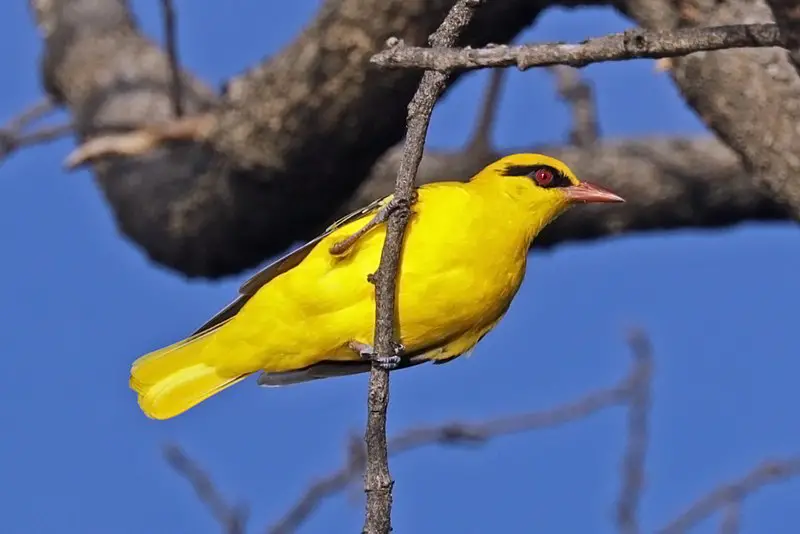
The African golden oriole is a beautiful passerine bird found in Africa south of the Sahara desert. It inhabits thick bushes and other well-wooded areas, building its hanging basket nest in tree branches.
The two eggs it lays are usually white or pale blue with dark spots. Its diet consists mainly of insects and fruit, especially figs which can be found among the high treetops where this species makes its home.
With its striking yellow plumage accented by black wings and tail feathers, this bird stands out amongst others as an exotic yet vibrant creature that instantly captures attention when spotted.Scientific classification:
| Kingdom | Animalia |
| Phylum | Chordata |
| Class | Aves |
| Order | Passeriformes |
| Family | Oriolidae |
| Genus | Oriolus |
| Species | O. auratus |
16. African Paradise Flycatcher
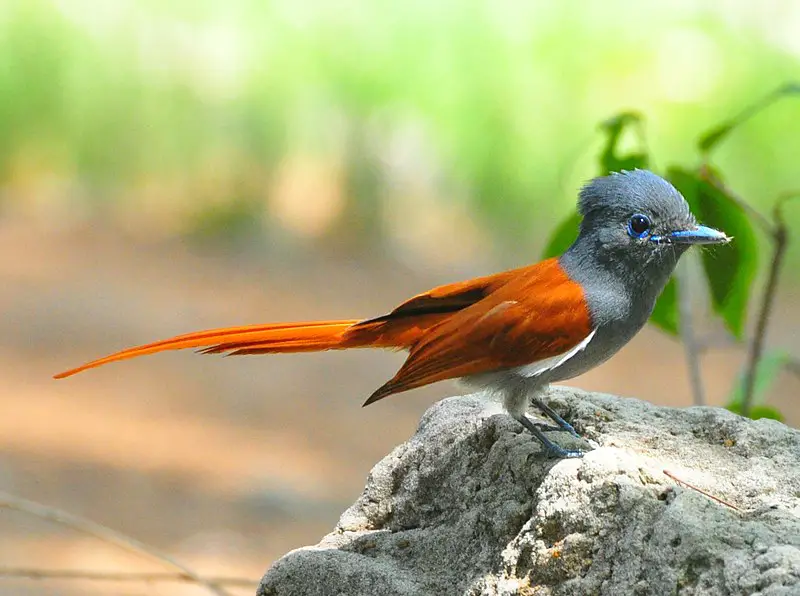
The African paradise flycatcher is a beautiful passerine bird, with the males having tail feathers that extend into streamers twice as long as its body.
Males have chestnut or rusty coloured upper parts on their wings and tails, contrasting nicely against the whitish underparts of both genders.
The head and throat are black for adult males, while females lack this colouration but feature some orange-red streaking instead.
Both sexes bear red eyes and blue-grey legs and feet to round out their appearance.
These birds mainly inhabit tropical forests throughout Sub-Saharan Africa where they feed primarily on insects such as beetles, ants, cicadas; occasionally supplementing it with small fruit when available during certain times of yearScientific classification:
| Kingdom | Animalia |
| Phylum | Chordata |
| Class | Aves |
| Order | Passeriformes |
| Family | Monarchidae |
| Genus | Terpsiphone |
| Species | T. viridis |
17. Abyssinian Ground Hornbill
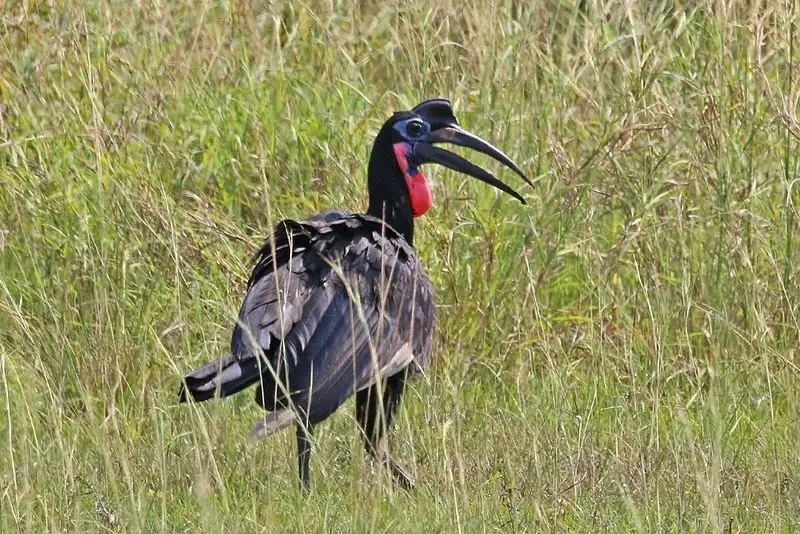
The Abyssinian ground hornbill is an African bird, found mainly north of the equator. It is one of two species of ground hornbills and second largest amongst all African Hornbills only surpassed by its slightly larger relative – southern ground hornbill.
This impressive bird was described by Georges-Louis Leclerc, Comte de Buffon in 1780’s and has a unique appearance with striking red facial skin surrounding bright yellow eyes.
The male birds are bigger than females and have different plumage colours (black/blue feathers) compared to their female companions who tend to be brownish grey.
They feed on insects, small mammals or reptiles which they hunt from the sky or find on land using their powerful feet for digging up prey items hidden underneath soil or sand.Scientific classification:
| Kingdom | Animalia |
| Phylum | Chordata |
| Class | Aves |
| Order | Bucerotiformes |
| Family | Bucorvidae |
| Genus | Bucorvus |
| Species | B. abyssinicus |